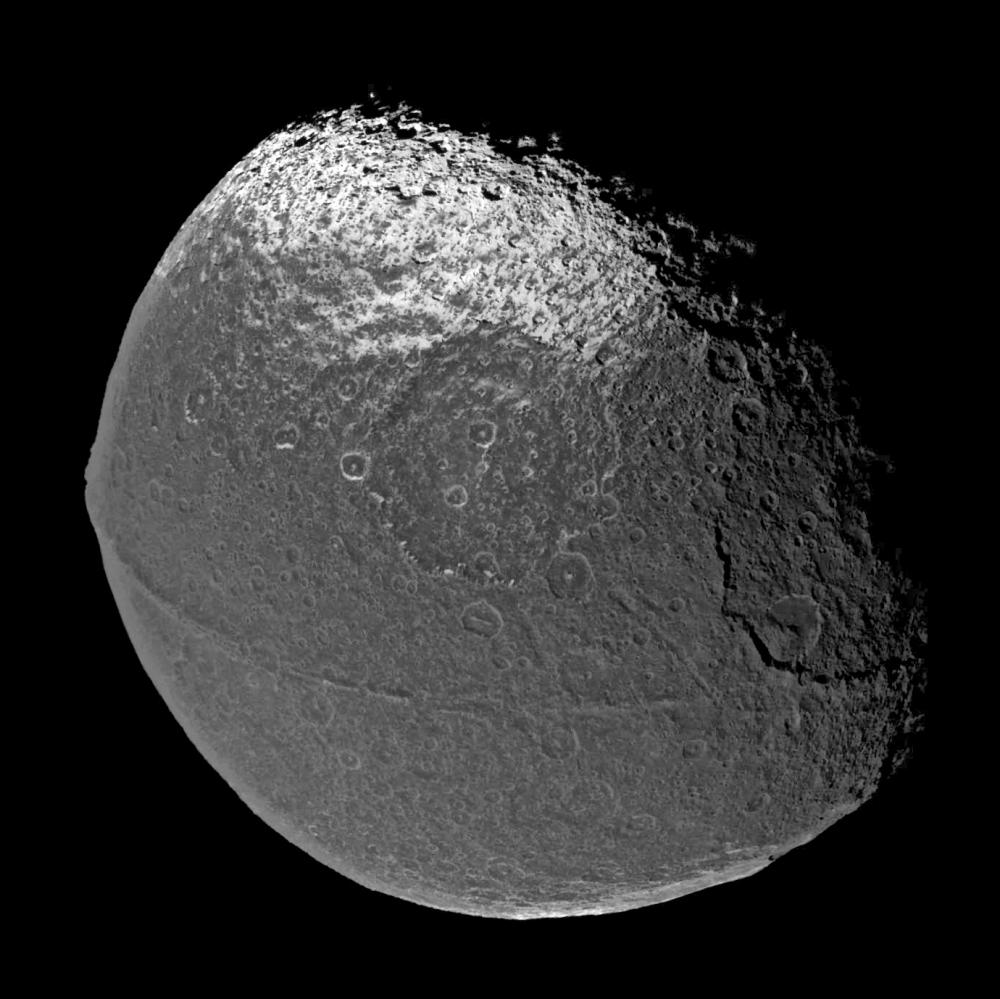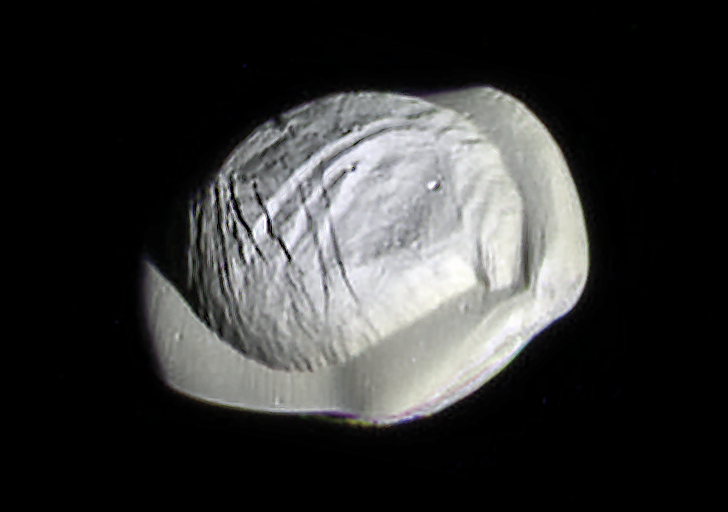It looks like you're using an Ad Blocker.
Please white-list or disable AboveTopSecret.com in your ad-blocking tool.
Thank you.
Some features of ATS will be disabled while you continue to use an ad-blocker.
share:
It's a fairly recent discovery, 1990, predicted in 1985, then it was found on certain voyager 2 pictures that actually went back to 1981, while the
predicted position in the Encke Gap was near spot on. More below,
en.wikipedia.org...(moon)
en.wikipedia.org...(moon)
a reply to: EchoesInTime
It almost looks like a cross between Mount Olympus and a duplex.
"Our realm is clearly flat."
"Nonsense! There is another realm on the other side of the lip!
"Preposterous!"
It almost looks like a cross between Mount Olympus and a duplex.
"Our realm is clearly flat."
"Nonsense! There is another realm on the other side of the lip!
"Preposterous!"
Looks like a half finished tootsie roll pop.
Love this footage though!
Love this footage though!
It looks like one of those cliche flying saucers from old TV shows.
Galactus couldn't remember where he parked...
Galactus couldn't remember where he parked...
A perfect place to experience life on a flat earth. imagine walking over the horizon.
Phil Plait, as usual, gets a good lowdown on the matter: www.blastr.com...
Because Pan orbits inside the rings, it can gravitationally attract the tiny ice particles that make up the rings, and pull them onto its surface. Now, despite being hundreds of thousands of kilometers wide, the rings of Saturn are incredibly thin, in places only just 10 meters thick! That’s the height of a two-story house*, for some perspective.
Because Pan orbits exactly in the plane of the rings, when it pulls in the ice the particles land on its equator, all around the moon. This stuff piles up. On Earth, this would make on low, long ridge, because Earth’s gravity is strong, and the particles would slump if they piled up past a certain height.
But Pan’s gravity is very weak, just one-ten thousandth as strong as Earth’s. You could easily throw a baseball off the surface and have it leave the moon forever. Because of that teeny force, the ring particles can pile up to tremendous height without slumping. The result is a slightly triangular wall that reaches more than seven kilometers off the surface in some places!
a reply to: EchoesInTime
cappelltti more like it
or more like Van Goghs missing ear
piece of ravioli.
cappelltti more like it
or more like Van Goghs missing ear
edit on 10-3-2017 by TheConstruKctionofLight because: (no reason given)
a reply to: wildespace
Thank-you for that article. Makes sense to me! I was beginning to think the solar system is boring.
Thank-you for that article. Makes sense to me! I was beginning to think the solar system is boring.
a reply to: wildespace
What's interesting to me is that Iapetus has the same type of ridge on its equator. Perhaps that distant moon once orbited within the rings - possibly in a very elliptical orbit with a periapsis within the rings.

However, Iapetus' current orbit is pretty circular, though abnormally inclined. Perhaps close encounters with Titan raised its orbit, then tidal stresses from Saturn circularized both moon's orbits.
Although mostly circular (more-so than our moon's orbit), Both Titan's & Iapetus' orbits are unusually elliptical for the tidal forces present. This could be an indicator of previous interactions that have not yet stabilized.
What's interesting to me is that Iapetus has the same type of ridge on its equator. Perhaps that distant moon once orbited within the rings - possibly in a very elliptical orbit with a periapsis within the rings.

However, Iapetus' current orbit is pretty circular, though abnormally inclined. Perhaps close encounters with Titan raised its orbit, then tidal stresses from Saturn circularized both moon's orbits.
Although mostly circular (more-so than our moon's orbit), Both Titan's & Iapetus' orbits are unusually elliptical for the tidal forces present. This could be an indicator of previous interactions that have not yet stabilized.
originally posted by: EchoesInTime
originally posted by: SeaWorthy
2010
Image of the Day: Saturn's Weird Moon, Pan (cool picture)
page: 1
www.abovetopsecret.com...
Great photo of Pan in 2010.
For the record, that's not a photo, it's CGI art. Pretty accurate though. But these new Cassini images are indeed the first closeup look we've ever had of Pan.
~~~
Here's an enlarged and enhanced image of Pan I nicked from the Unmanned Spaceflight forum:

edit on 12-3-2017 by wildespace because: (no reason given)
To me it looks like planet and moons in saturns region have, at one point or another, had dust rings. Maybe there was a lot of dust in that zone, just
like we have asteroid belts. Maybe the moons had a smaller amount of dust, and no "shepherds", in their rings and attrackted the dust much faster.
That could account for iapetus having a ridge too.
I wonder how ridiculous my hypothesis is.
I wonder how ridiculous my hypothesis is.
edit on 12-3-2017 by 2Faced because: Too arrogant to use a spellchecker
new topics
-
Little Johnny and Larry should team up
General Chit Chat: 5 hours ago -
Will Us use alien technology to fight in ww3?
World War Three: 5 hours ago -
posted in wrong forum
Aliens and UFOs: 6 hours ago
top topics
-
Elon Says It’s ‘Likely’ He Buys Tanking MSNBC
Political Ideology: 14 hours ago, 16 flags -
Jaguar Rebrand Video Causes "WTF?" Moment - Seriously Weird
Automotive Discussion: 17 hours ago, 15 flags -
Montelukast affects brain, caused 5 year old to attempt suicide
Medical Issues & Conspiracies: 15 hours ago, 15 flags -
Shane Gillis commercial
Jokes, Puns, & Pranks: 12 hours ago, 4 flags -
Little Johnny and Larry should team up
General Chit Chat: 5 hours ago, 4 flags -
posted in wrong forum
Aliens and UFOs: 6 hours ago, 0 flags -
Will Us use alien technology to fight in ww3?
World War Three: 5 hours ago, 0 flags
active topics
-
Elon Says It’s ‘Likely’ He Buys Tanking MSNBC
Political Ideology • 74 • : andy06shake -
Montelukast affects brain, caused 5 year old to attempt suicide
Medical Issues & Conspiracies • 10 • : DeadlyStaringFrog -
Jaguar Rebrand Video Causes "WTF?" Moment - Seriously Weird
Automotive Discussion • 21 • : Athetos -
Well we know Putins ICBMs won't fail in their silos
World War Three • 176 • : andy06shake -
Will Us use alien technology to fight in ww3?
World War Three • 3 • : Athetos -
Biden's "Reckless" Decision To Escalate Russia-Ukraine War
World War Three • 122 • : PrivateAngel -
Well, here we go red lines crossed Biden gives the go ahead to use long range missiles
World War Three • 329 • : Imhere -
International Criminal Court Issues Arrest Warrant For Netanyahu
Mainstream News • 44 • : JJproductions -
Why isn't Psychiatry involved?
Social Issues and Civil Unrest • 12 • : tamusan -
What Joe Rogan said Vs The View
Dissecting Disinformation • 22 • : TheMisguidedAngel
